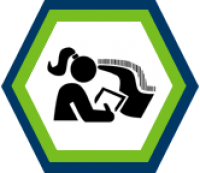SWCD inspects public water or public drainage system buffer to determine compliance.
Is parcel compliant?
YES or NO
Background:
The Minnesota Buffer Law (§103F.48) tasks local governments (SWCDs) with determining buffer law compliance and offering assistance statewide. An SWCD or drainage authority is responsible to determine if an affected parcel is compliant with the Minnesota Buffer Law or Drainage Law (§103E).
What the statute says:
Subd. 6.Local implementation and assistance. (a) Soil and water conservation districts must assist landowners with implementation of the water resource riparian protection requirements established in this section. For the purposes of this subdivision, assistance includes planning, technical assistance, implementation of approved alternative practices, and tracking progress toward compliance with the requirements.
Subd. 7.Corrective actions. (a) If the soil and water conservation district determines a landowner is not in compliance with this section, the district must notify the county or watershed district with jurisdiction over the noncompliant site and the board.
Helpful tips:
- For more information on determining compliance and frequency of ongoing inspections, visit the implementation guidance pages.
- For more information regarding ongoing buffer compliance monitoring, see Procedure 2: Reporting and Progress Tracking.
- SWCDs must obtain permission to enter private property. If accompanied by drainage authority or county staff, an SWCD employee may have the ability to access private property. Check with your legal counsel.
- A Memorandum of Understanding (MOU) or Memorandum of Agreement (MOA) can be a valuable tool for helping to navigate the buffer compliance process locally.
- According to state statute, there is an overlap of duties determining buffer compliance with §103E (Drainage Authority) and §103F.48 (SWCD) ditch buffers. We recommend consulting with your local drainage authority and developing a local agreement on how to best conduct monitoring to meet standards as well as combine monitoring efforts.
Local agreements (optional):
Many buffer law-related items can be addressed more efficiently through use of an agreement between the SWCD and the enforcement entity(s). It is recommended that the SWCD meets with the enforcement entity (county, watershed district, BWSR) to discuss the steps of the enforcement process, including duties, timelines, documentation, filing, and communication throughout the process.
- Local agreements are not required by law and are used at the discretion of local governments to determine their need.
- An MOU/MOA may also help guide staff in the event of personnel turnover. An MOU/MOA may be used when the enforcement entity elects to give a portion of their riparian aid money to the SWCD for their work determining compliance and helping landowners come into compliance and stay in compliance.
- These two options are interchangeable. They establish a formal agreement between two or more entities to form an official partnership. Continued communication between local government units is recommended.
- Another situation where an MOU/MOA may be beneficial is when a ditch authority already inspects drainage ditches and enforces the buffer through MN §103E, and the SWCD is tasked with tracking compliance on those same ditches by §103F.48.
Examples:
Agreements for County/SWCD Duties
Agreements for WD/SWCD duties
Agreements for SWCD/WD monitoring where there is overlap between §103E and §103F.48 ditches
- Ditches have had a re-determination of benefits (ROB) completed and an easement as been acquired through that process
Agreements for county riparian aid fund distribution to SWCDs

